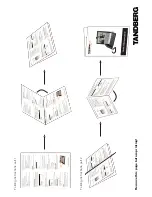
©
Sieme
ns
AG
2003, W:\I
CM
_MP_
CCQ_S_U
M\04FL00594
Safety precautions
8
VAR Langua
ge: a
m
; VAR issue
date: 041001
left page (8)
of CT66 Cingular am, A31008-H7840-A65-2-4A19 (05.10.2004, 15:12)
• should turn the phone OFF imme-
diately if there is any reason to
suspect that interference is taking
place.
Hearing aids
Some digital wireless phones may
interfere with some hearing aids. In
the event of such interference, you
may want to consult your service
provider or your hearing aid manu-
facturer to discuss alternatives.
Other medical devices
If you use any other personal medi-
cal devices, consult the manufactur-
ers of your devices to determine if
they are adequately shielded from
external RF energy. Your physician
may be able to assist you in obtain-
ing this information.
Turn your phone OFF in health care
facilities when any regulations post-
ed in these areas instruct you to do
so. Hospitals or health care facilities
may be using equipment that could
be sensitive to external RF energy.
Vehicles
RF signals may affect improperly
installed or inadequately shielded
electronic systems in motor vehicles.
Check with the manufacturer or its
representative regarding your vehi-
cle. You should also consult the
manufacturer of any equipment that
has been added to your vehicle.
Posted facilities
Turn your phone OFF in any facility
where posted notices so require.
Airplanes
FCC and Airline Regulations prohibit
using your phone while in the air.
Turn your phone OFF when request-
ed by the airline.
Check and comply with the policy of
your airline regarding the use of your
phone while the airplane is on the
ground.
Blasting areas
To avoid interfering with blasting op-
erations, turn your phone OFF when
in a “blasting area” or in areas post-
ed: “Turn off two-way radio.” Obey
all signs and instructions.
Potentially explosive
atmospheres
Turn your phone OFF when in any
area with a potentially explosive
atmosphere and obey all signs and
instructions. Sparks in such areas
could cause an explosion or fire
resulting in bodily injury or even
death.
Areas with a potentially explosive at-
mosphere are often but not always
clearly marked. They include: fueling
areas such as gasoline stations; be-
low deck on boats; fuel or chemical
transfer or storage facilities; vehicles
using liquefied petroleum gas (such










































